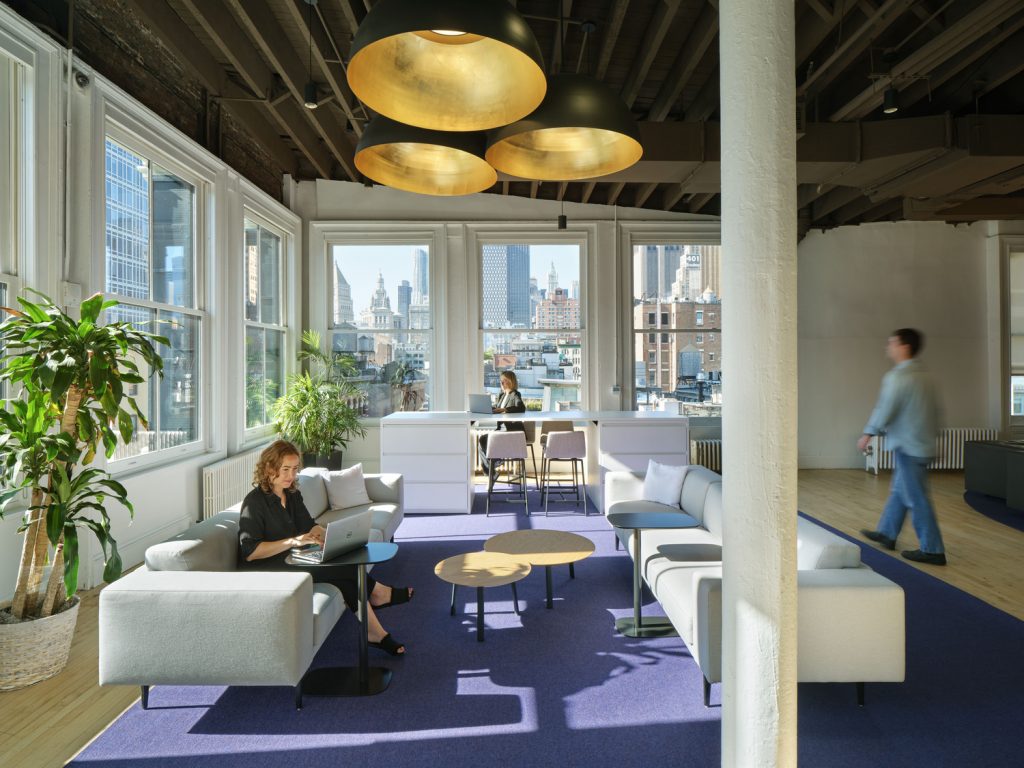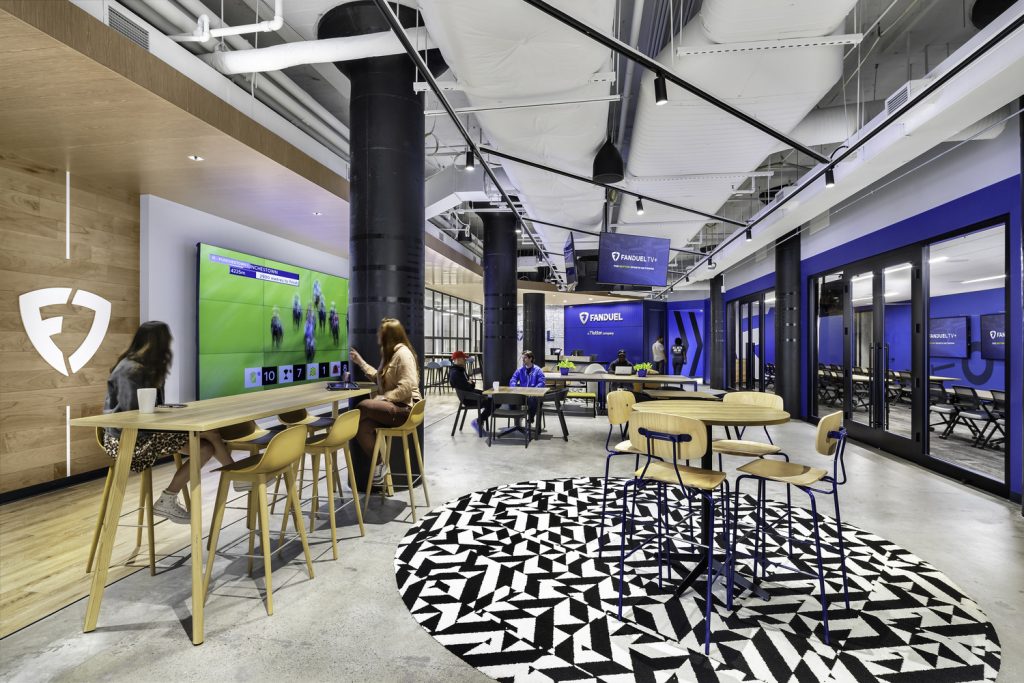Unispace’s Elise Cuneo shares three ways to spark cultural optimism and connect employees through change.
In today’s evolving world of work, employees expect a lot from their workplace environment — free snacks and games is an outdated approach and is no longer enough to entice people back into the office.
Creating a resilient and positive workplace environment through thoughtful design fosters a sense of belonging and purpose among employees, nurturing a culture of optimism and connection to mission and brand. By focusing on the integration of spaces and places that prioritize comfort and the mixed needs of a workforce, the workplace becomes more than just a series of physical spaces — it becomes a platform for connection and productivity.
When there is a strong alignment between employees’ personal values and the values of their organization, they are more engaged, motivated, and committed to their jobs. And now more than ever, business leaders are seeing the role that the workplace experience can play in shaping these positive feelings.
The key to unlocking value from the workplace, and in turn, the workforce, is to create an ecosystem that can adapt to evolving and varied employee needs and preferences over time.
Embedding workplace resilience in a hybrid era
There’s no one path to a resilient workplace, but Unispace’s Returning for Good report shows an inherent disconnect between what employers are providing, and what employees actually need and want in the workplace.
For example, according the Unispace report,
. . . the vast majority of U.S. employers (89%) are confident that their current office allows people to be productive, while more than half (52%) of employees say they struggle to carry out their core role in their current office environment because of regular interruptions and a high number of meetings.
The first step to unlocking the approach to any new workplace environment is through listening and understanding the needs of a company and their people — no two workplace environments are the same. With hybrid work here to stay, exactly how companies are bringing employees back into the office also varies from company to company, sector to sector.
Our research shows, for instance, that many of today’s employees enjoy the autonomy, privacy, and quietness of working from home. Knowing this, workplace strategy and design can play critical roles in creating responsive environments that bring together the elements of home that employees enjoy, while adding value where working from home may fall short, such as in areas where face-to-face interaction is more productive.
To support a hybrid workforce, the workplace needs to be designed purposefully to ensure it acts as a catalyst to empower, engage, inspire, and enable both remote and in-office workers to be productive and feel connected.

Here are three ways to drive that connection, from providing purposeful workplace choices and designing for all people to articulating brand culture.
1) Support employee purpose with flexible, tech-enabled design
How can companies create tailored, experiential work environments that evolve as their workers’ needs change?
A company can work with an experienced strategy and design team to create a tailored, experiential work environment by prioritizing flexibility and adaptability in their approach.
As no workforce is the same, this involves diving deep and understanding the diverse needs and preferences of an organization’s workforce and creating spaces that can evolve alongside them.
Integrating elements of modular furniture, flexible layouts, and adaptable technology infrastructure can allow for seamless adjustments to accommodate changing work styles and preferences. Additionally, integrating spaces such as designated quiet zones, collaborative areas, or wellness spaces empowers employees to tailor their work environment and choose environments to suit their individual needs.
By continually engaging and welcoming feedback from employees as well as monitoring evolving trends in workplace dynamics, companies can ensure that their environments remain responsive and relevant, fostering a sense of empowerment and ownership among employees while promoting productivity and well-being.
2) Deliver spaces where everyone belongs
One of the most important steps to supporting a culture where everyone feels welcome and belongs is understanding the diverse needs of a workforce and using inclusive and equitable design practices to accommodate them.
This means going above and beyond in developing a program and experience that supports all employees.

Some tactics that should be considered when designing an environment that supports belonging include (but are not limited to):
- Designing with inclusivity and equity in mind. At its core, the workplace is about people and their experiences. Everyone wants to feel they belong within their workplace, and when they do, they are more likely to contribute to their fullest potential. Using inclusive and equitable design principles that go beyond ‘checking a box’ can truly support all people, including their unique differences and abilities, ensuring they feel valued as a member of the company community.
- By connecting the physical environment with brand values and purpose, a company can reinforce its mission, whilst sparking employee connection and pride.
- Supporting a multigenerational workforce. The days of a one-size-fits-all workplace environment are long gone. As the workplace becomes more diverse, so are the range of priorities and expectations surrounding them. For example, Gen Zers prioritize mental health, diversity, and inclusion, whereas Millennials tend to focus on company reputation, purpose, and connection. One way to empower these and other generations at the same time is to encourage collaboration and communication across a mix of tailored office spaces.
3) Activate community, culture, and connection
For all companies, creating a strong culture in the workplace is a top priority. That means anchoring the workplace in community, fostered through deep connection and trust using a range of key workplace strategies, from authentic design and technology to well-being considerations.
Through thoughtful design, the physical workplace can bring community, culture, and connection to life in many ways.
For example, flexible or multi-use areas like cafes can support the serendipitous interactions and casual engagements that lead to new ideas as well as increased productivity.
Integrated technologies also support remote employees and ensure a parity of experience no matter where they might be located, while driving connection to people and place.
A creative approach to storytelling through intentional branding, art, and cultural programming can help support a feeling of ‘we’re in this together.’
Through it all prioritizing well-being is essential. Championing health and well-being goes beyond fitness centers and healthy food options but must also consider how the workplace environment impacts and supports the physical, cognitive, and emotional needs of people.
The future workplace is a resilient one
To achieve a future that can withstand the current pace of change, the design of a workplace environment must center around people and their needs, ensuring they feel valued and supported through both physical space and experience.
By reimagining the workplace, with design that is underpinned by purpose, belonging, and connection, business leaders will empower their teams to thrive now, and into the ever-changing future.

